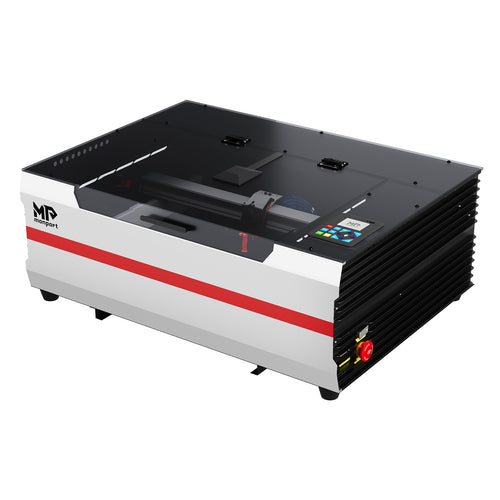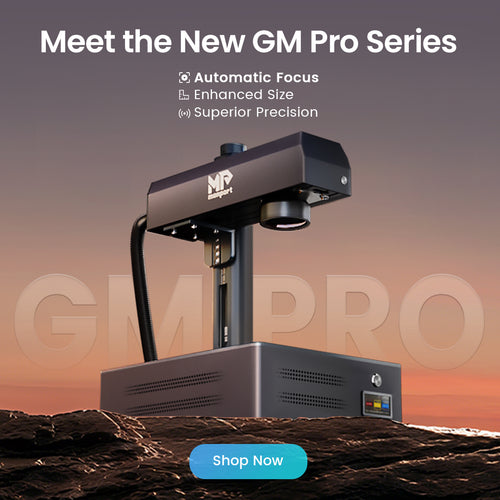Introduction
Welcome to our Laser Engraving and Industry blog, where we unravel the mysteries of MOPA and fiber lasers. Curious about "What is the difference between MOPA and the fiber laser?" Dive into the world of precision with our spotlight on the Monport GI60 Integrated MOPA Fiber Laser Engraver & Marking Machine, a cutting-edge tool poised to redefine laser technology in 2024. This advanced equipment, also suitable as a fiber laser cutter, combines versatility and efficiency to elevate your engraving and cutting experience. Explore the fusion of innovation and functionality in this remarkable machine.
Monport GI60 Integrated MOPA Fiber Laser Engraver & Marking Machine with Electric Lifting
Understanding MOPA and Fiber Lasers
MOPA Lasers
MOPA stands for Master Oscillator Power Amplifier. It is a type of laser that allows for pulse width modulation, providing greater control over laser parameters. MOPA lasers are known for their flexibility in pulse duration, frequency, and intensity, making them suitable for a wide range of applications, including marking and engraving on various materials like metals, plastics, and ceramics.
Fiber Lasers
On the other hand, fiber lasers are a type of solid-state laser that use an optical fiber as the gain medium. They offer high efficiency and reliability, making them a popular choice for industrial applications. Fiber lasers, often employed as fiber laser cutters, are predominantly used for high-speed cutting, welding, and deep engraving on metals.

The Differences Between MOPA and Fiber Lasers
While both MOPA and fiber lasers have their own strengths, they differ in certain key aspects:
Pulse Durations
One of the significant differences between MOPA and fiber lasers lies in their pulse durations. MOPA lasers have longer pulse durations, typically ranging from a few nanoseconds to hundreds of nanoseconds. This longer pulse duration allows for better control over heat generation and minimizes the possibility of thermal damage to sensitive materials. In contrast, fiber laser cutters with shorter pulse durations, usually ranging from picoseconds to tens of nanoseconds, are more suitable for high-speed applications.
Color Marking
MOPA lasers excel in color marking, especially on stainless steel and anodized aluminum. By manipulating the pulse duration and frequency, MOPA lasers can create a wide range of colors on the surface of the material. On the other hand, fiber lasers are primarily used for laser engraving and marking in black or gray, with limited color marking capabilities.

Pulse Peak Power
MOPA lasers have the advantage of higher pulse peak power compared to fiber lasers. This higher peak power allows for deep engraving on metals, as well as the creation of high-quality marks on various materials. Fiber lasers, while not as powerful in peak power, compensate with their high repetition rate, enabling efficient and fast processing.
The Monport GI60 MOPA Fiber Laser Engraver & Marking Machine
Product Overview
The Monport GI60 Integrated MOPA Fiber Laser Engraver & Marking Machine with Electric Lifting combines the benefits of both MOPA and fiber laser cutters. It offers the flexibility and control of a MOPA laser, along with the efficiency and reliability of a fiber laser cutter. With its electric lifting feature, it allows for effortless positioning and adjustment of the working surface.
Important Details
- Laser Type: MOPA Fiber Laser
- Laser Power: 20W (optional up to 50W)
- Pulse Duration: 5-200 ns
- Wavelength: 1064 nm
- Marking Area: 110x110mm (optional up to 300x300mm)
- Marking Speed: 7000mm/s

FAQs
-
Can the Monport GI60 mark colors on stainless steel?
Yes, the Monport GI60 MOPA Fiber Laser Engraver has the capability to mark colors on stainless steel using its pulse duration modulation feature. -
What materials can the Monport GI60 engrave or mark?
The Monport GI60 is suitable for engraving and marking various materials, including metals, plastics, ceramics, and more. -
Can the marking area be customized?
Yes, the Monport GI60 offers different options for the marking area size to accommodate different requirements.
Takeaways
- MOPA lasers provide flexible control over pulse duration, frequency, and intensity.
- Fiber lasers offer high efficiency and reliability for industrial applications.
- MOPA lasers excel in color marking and have longer pulse durations.
- Fiber lasers are ideal for high-speed cutting, welding, and deep engraving.
- The Monport GI60 MOPA Fiber Laser Engraver combines the benefits of both technologies.

Conclusion
In conclusion, understanding the differences between MOPA and fiber lasers is crucial in choosing the right laser engraving and marking machine for specific applications. While MOPA lasers provide more flexibility and color marking capabilities, fiber laser cutters offer high efficiency and reliability. The Monport GI60 Integrated MOPA Fiber Laser Engraver & Marking Machine with Electric Lifting is an excellent choice for industries that require both versatility and performance.










